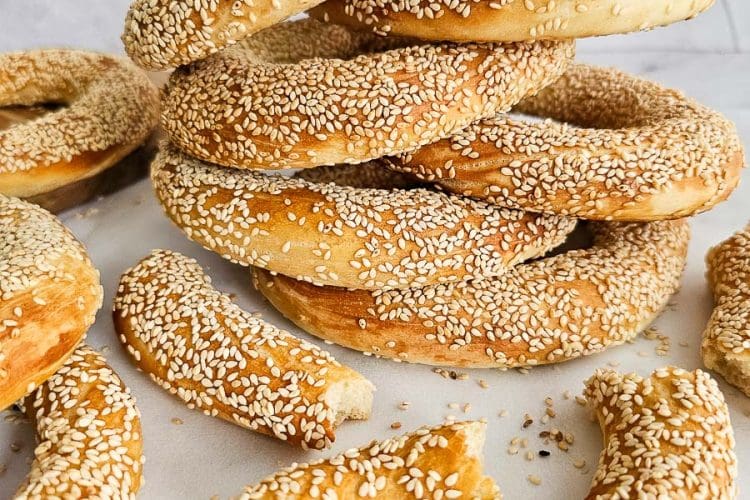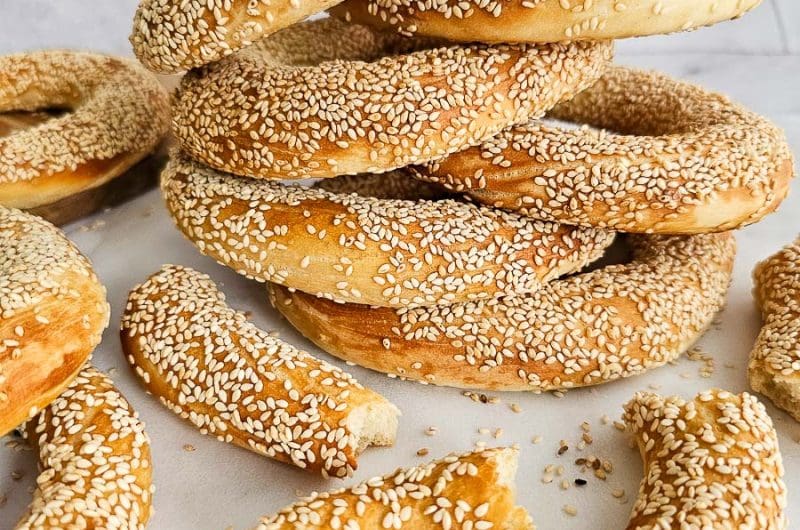If you enjoy baking bread or simply love eating it, this Greek Sesame Bread Rings (Koulouri Thessalonikis) recipe is for you. Known for their crisp exterior and soft, fluffy interior, these bread rings have a unique nutty flavour from the sesame seeds. They are perfect for breakfast, as a snack, paired with soup, or for soaking up the sauces of your favourite meal.
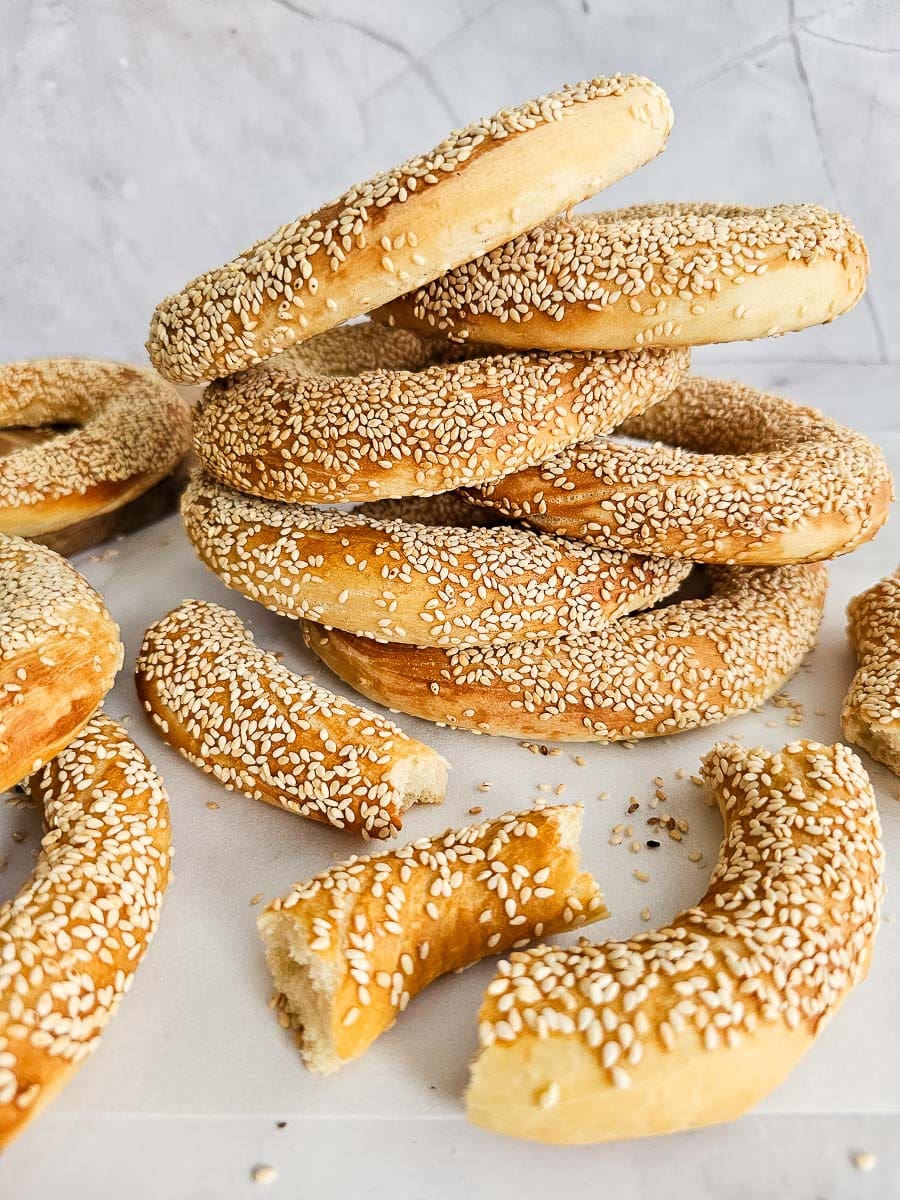
Koulouri Thessalonikis, also known as Koulouri, is a staple in Greek cuisine. Locals often enjoy it with a cup of coffee or as a satisfying on-the-go snack. What gives this bread it’s unique taste and smell is the generous coating of sesame seeds. There is nothing quite like the smell of freshly baked Koulouri. Every time I bake this bread, the smell coming from the oven fills the house and instantly reminds me of my visits to Greece. This bread is incredibly versatile. I quite often enjoy it for breakfast with some feta cheese, or as a side dish with soups like Greek Lemon Chicken Soup (Avgolemono) or Greek Chickpea Soup. It is also perfect for soaking up the flavourful sauces from your favourite lathera dishes, such as Greek Stuffed Tomatoes with Rice (Yemista) or Greek Butter Beans Casserole (Gigantes Plaki).
Ingredients for Greek Sesame Bread Rings (Koulouri Thessalonikis)
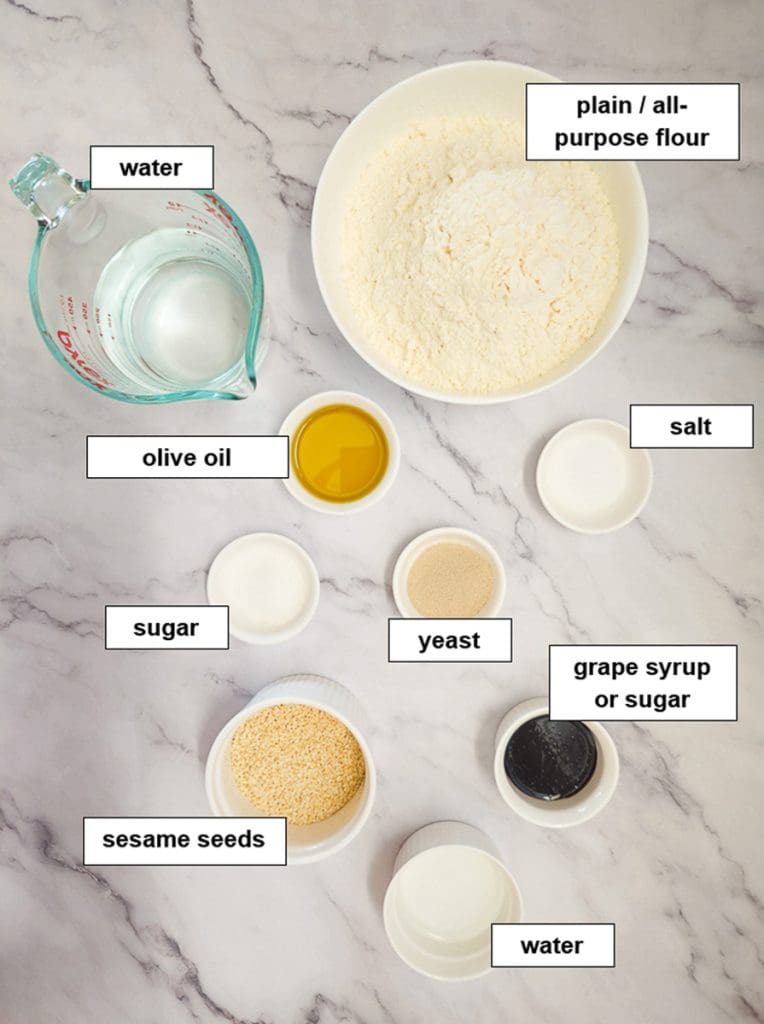
- All-purpose flour: You don’t need to buy special bread flour; plain flour / all-purpose flour works perfectly fine.
- Dry yeast: Helps the dough rise, giving the Koulouri its fluffy texture.
- Sugar: Feeds the yeast and adds a hint of sweetness.
- Salt: Enhances the overall flavour.
- Olive oil: Adds flavour and improves the texture of the bread.
- Warm water: Activates the yeast and brings the dough together. Make sure your water is lukewarm and not hot.
- Grape syrup / molasses: Also known as ‘Petimezi’ in Greek cuisine, or ‘Pekmez’ in Turkish. This gives the Koulouri its slightly sweet flavour. I buy this from my local delicatessen, but you can substitute with sugar if you can’t find grape syrup.
- Sesame seeds: Coat the bread rings, giving the Koulouri its unique flavour and smell when baked in the oven.
Health benefits of sesame seeds
Sesame seeds offer several nutritional benefits:
- Healthy Fats: Sesame seeds are a good source of healthy fats, including omega-6 fatty acids, which support heart health and overall well-being.
- Protein: Sesame seeds are rich in protein, making them a valuable addition to vegetarian and plant-based diets for muscle repair and growth.
- Minerals: Sesame seeds are packed with essential minerals such as calcium, magnesium, phosphorus and iron, which are important for maintaining strong bones, muscle function and overall vitality.
How to make Greek Sesame Bread Rings (Koulouri Thessalonikis)

1. In a large bowl, combine the lukewarm water, yeast and sugar.
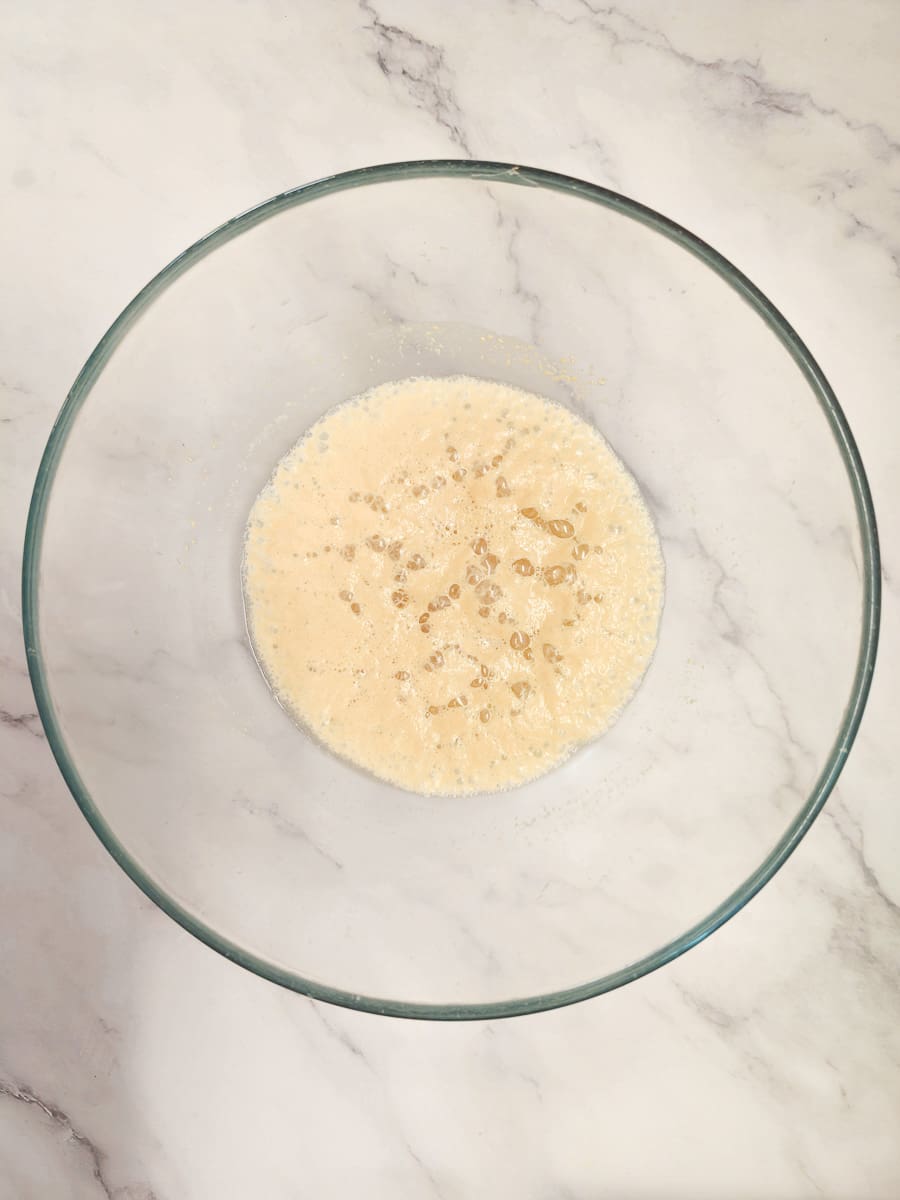
2. Set aside in a warm place, for approximately 10 minutes or until frothy.
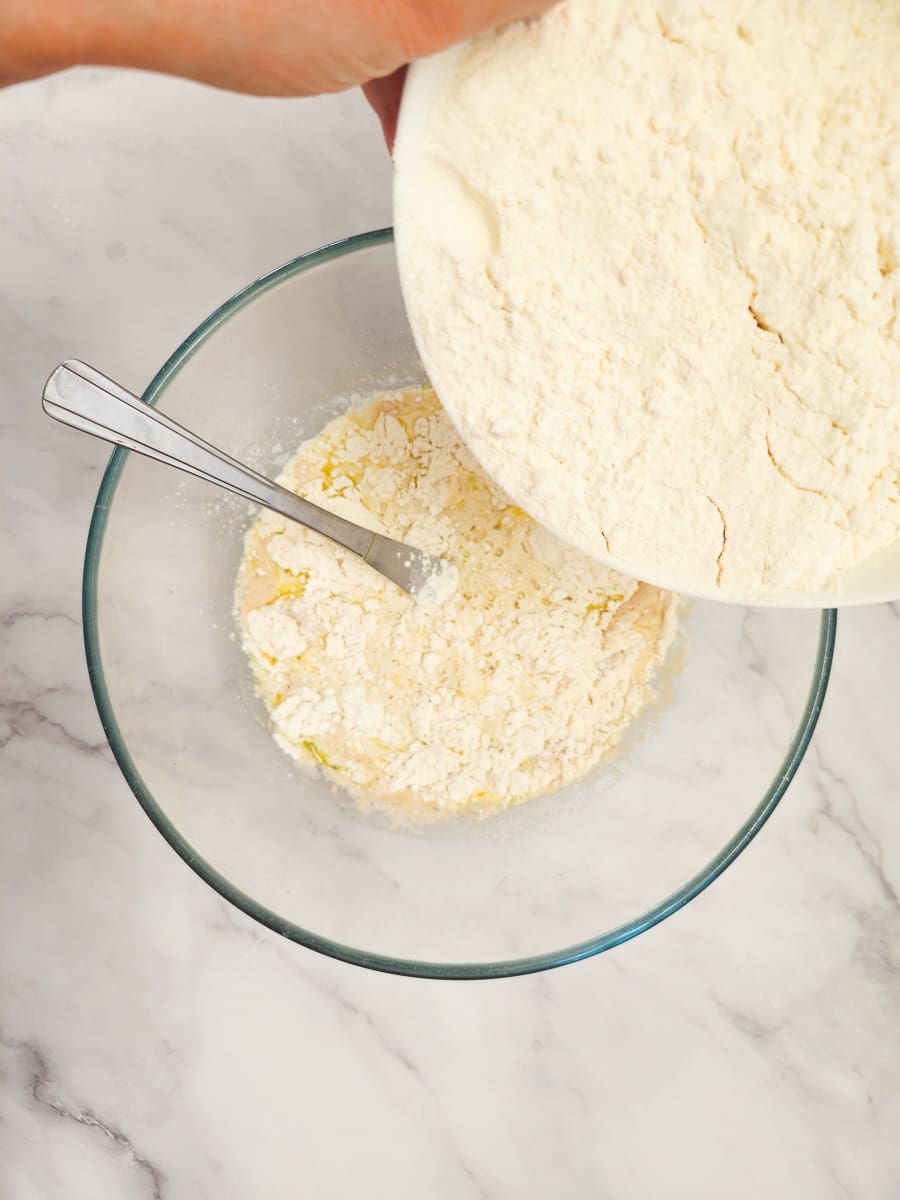
3. Add the flour, salt and olive oil.
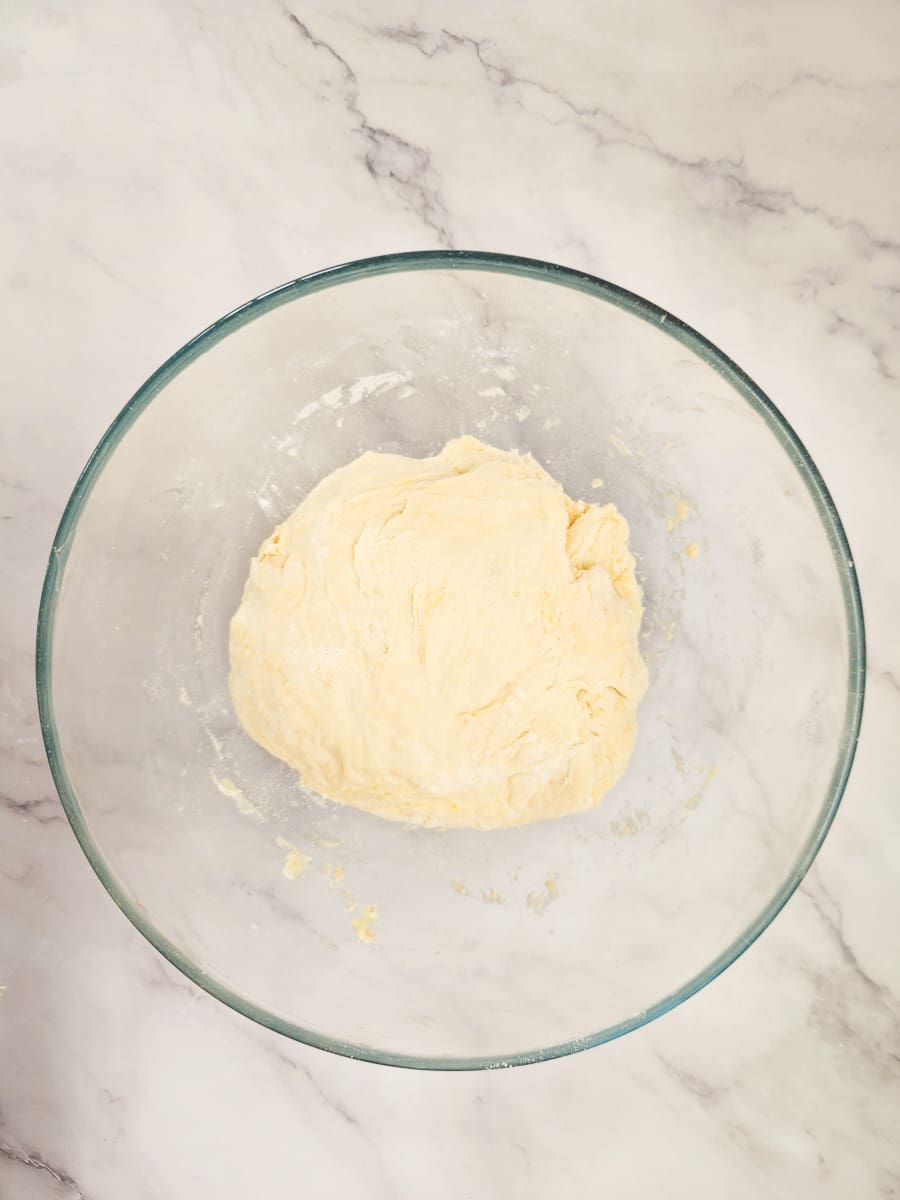
4. Bring together into a ball.
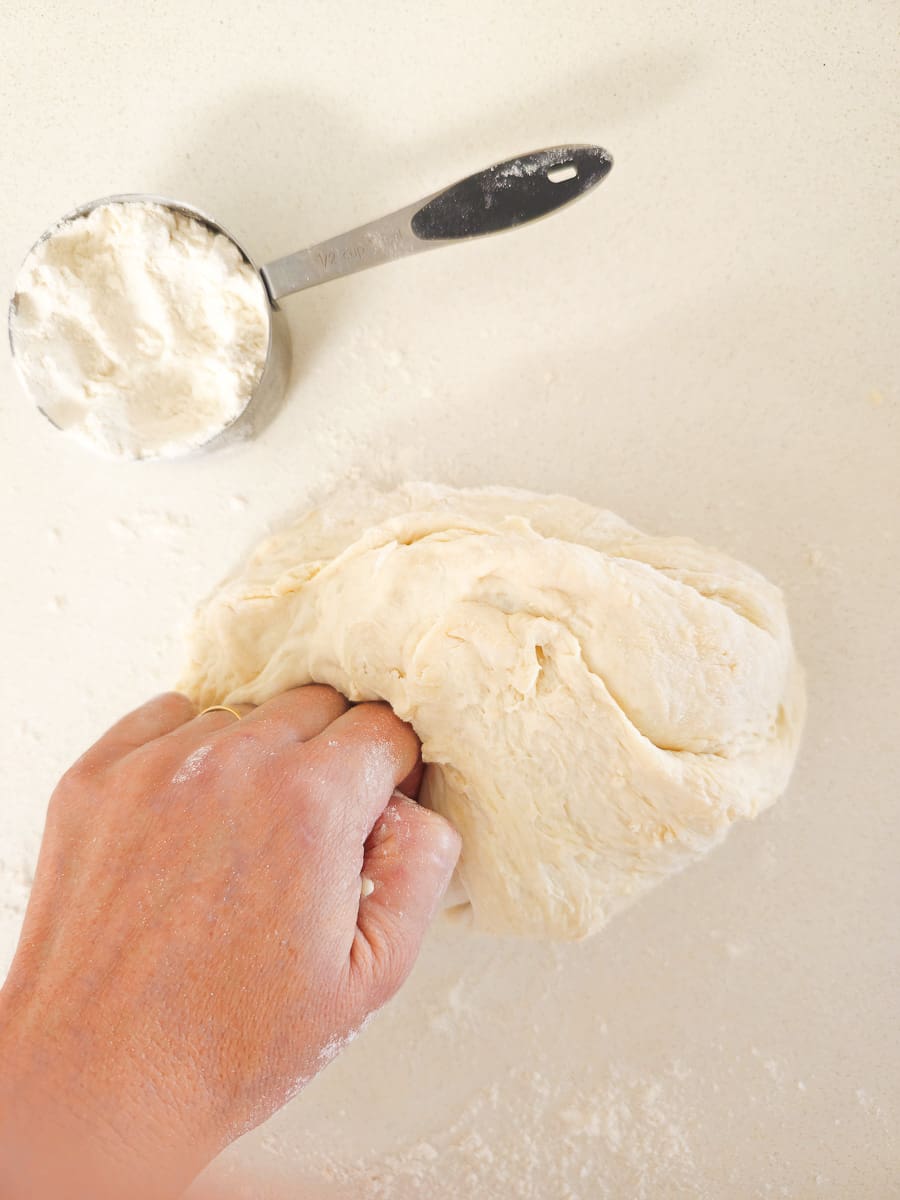
5. Turn the dough out onto a floured surface and knead for 10 minutes (by hand) until smooth and elastic. Alternatively, you can use a stand mixer with a dough hook attachment and knead for approximately 7 minutes.
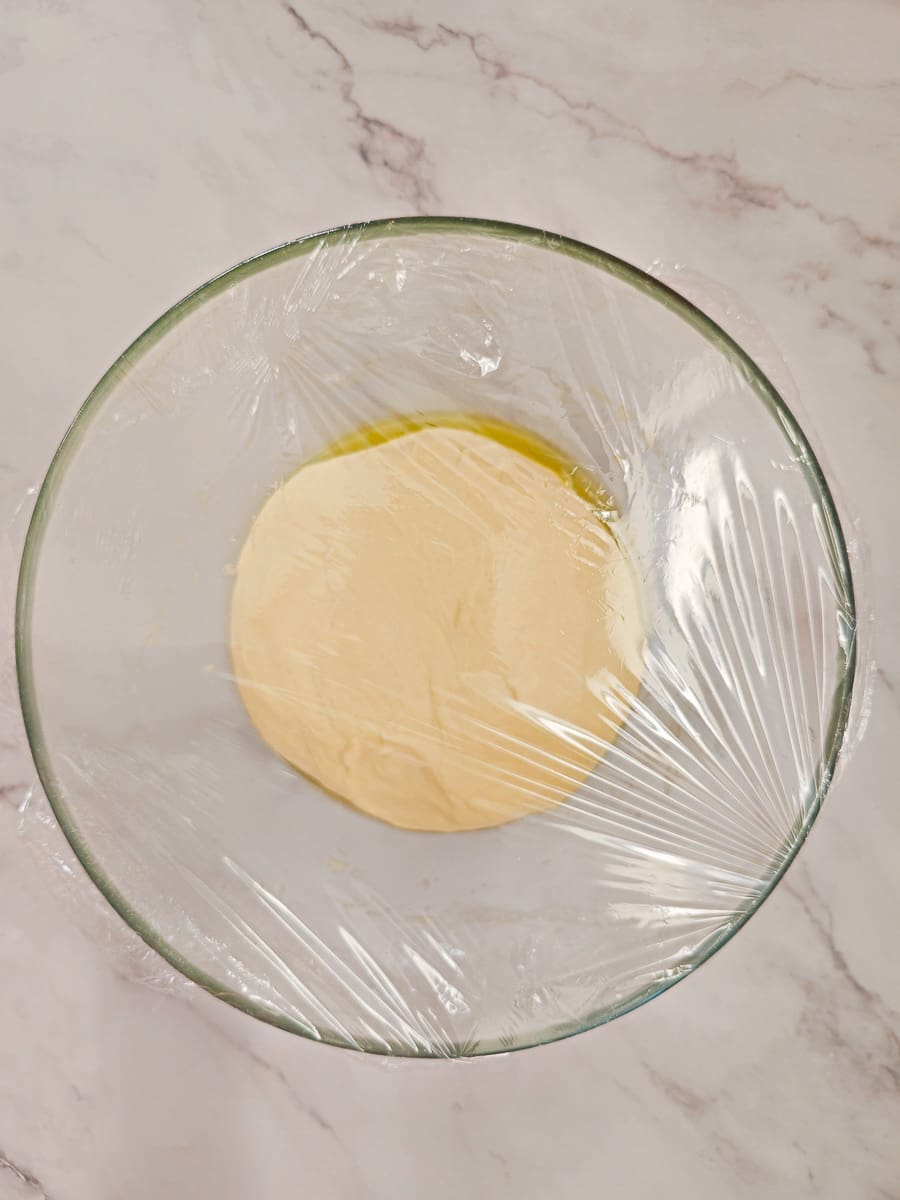
6. Place the dough in a lightly oiled bowl, cover it with cling wrap and a tea-towel, and let the dough rise in a warm place for about 1 hour, or until doubled in size.
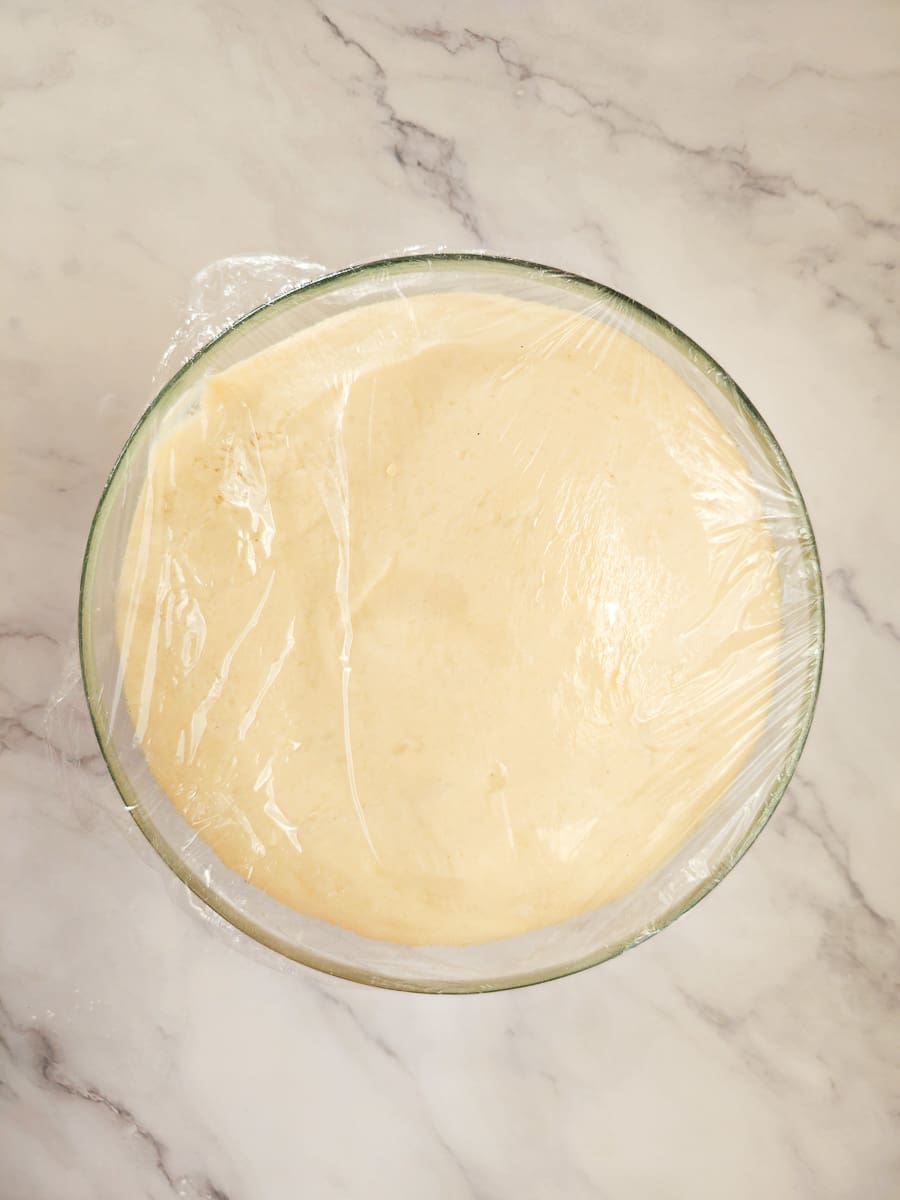
7. Punch down the risen dough and knead for another 2-3 minutes.
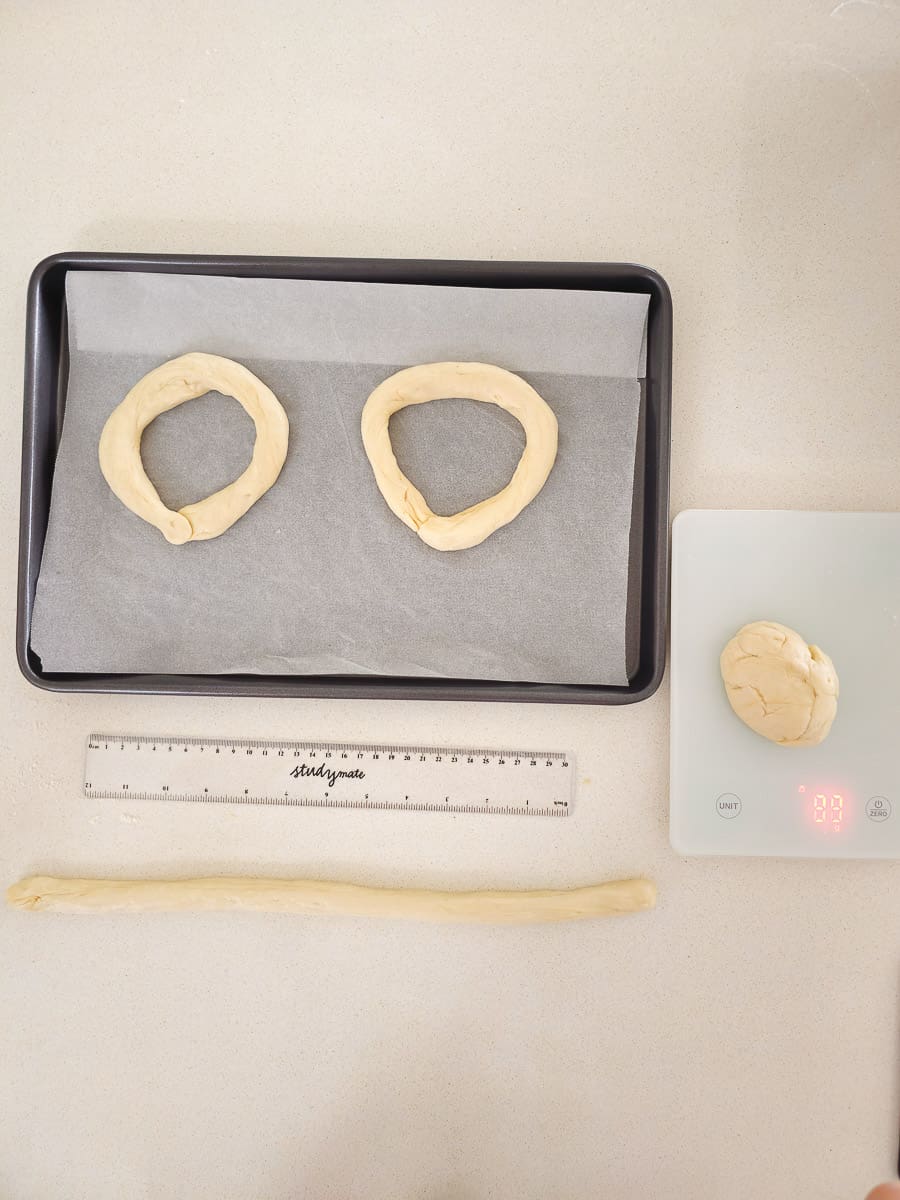
8. Divide the dough into 10 equal pieces. Roll each piece into a rope about 35 cm long / 14 inches inches long and form into a ring, pressing the ends together to seal.
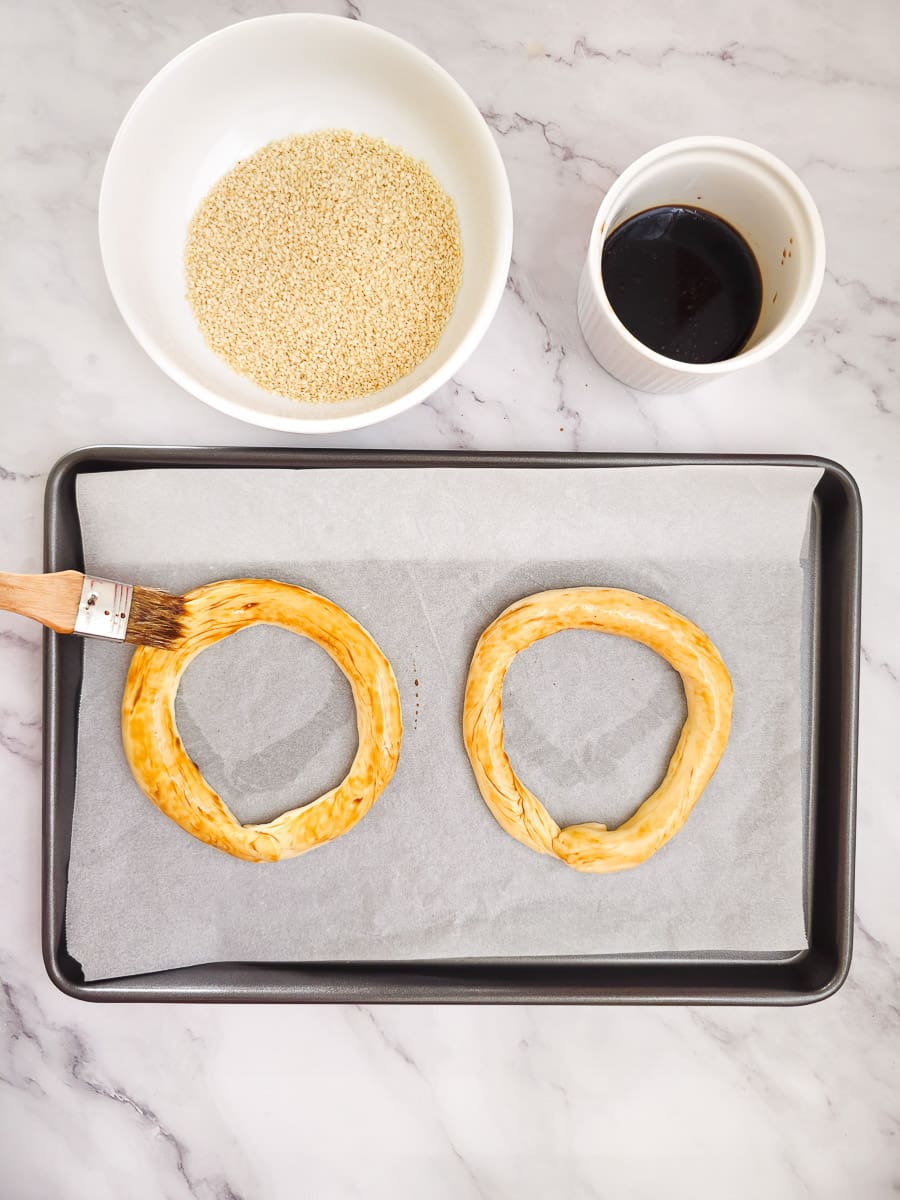
9. In a bowl, mix together the grape syrup or the sugar with the water, and brush onto both sides of your bread ring.
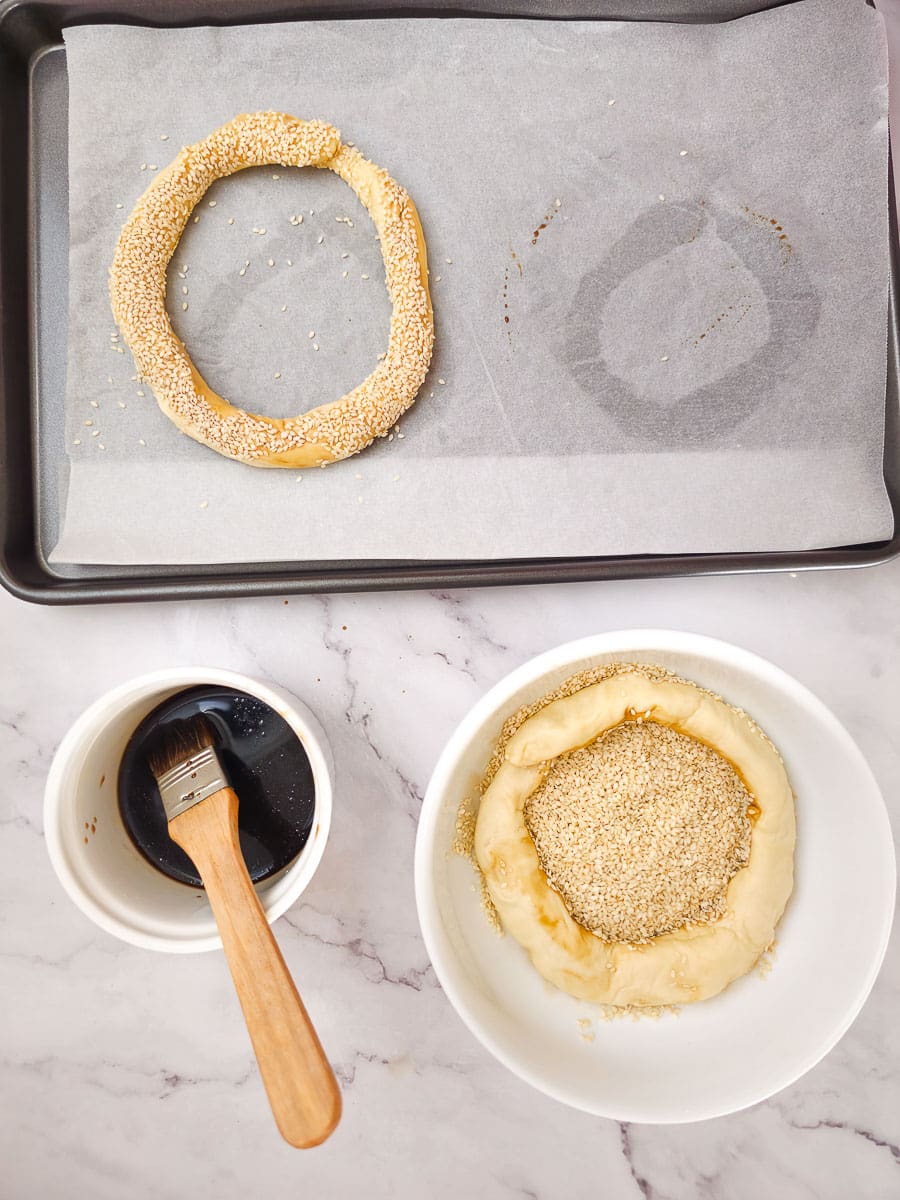
10. Place bread ring in a bowl filled with sesame seeds and generously coat with sesame seeds on both sides.

11. Alternatively, instead of brushing, for more flavour, you can carefully dip each ring into the grape syrup or sugar mixture and then dip into the sesame seeds.
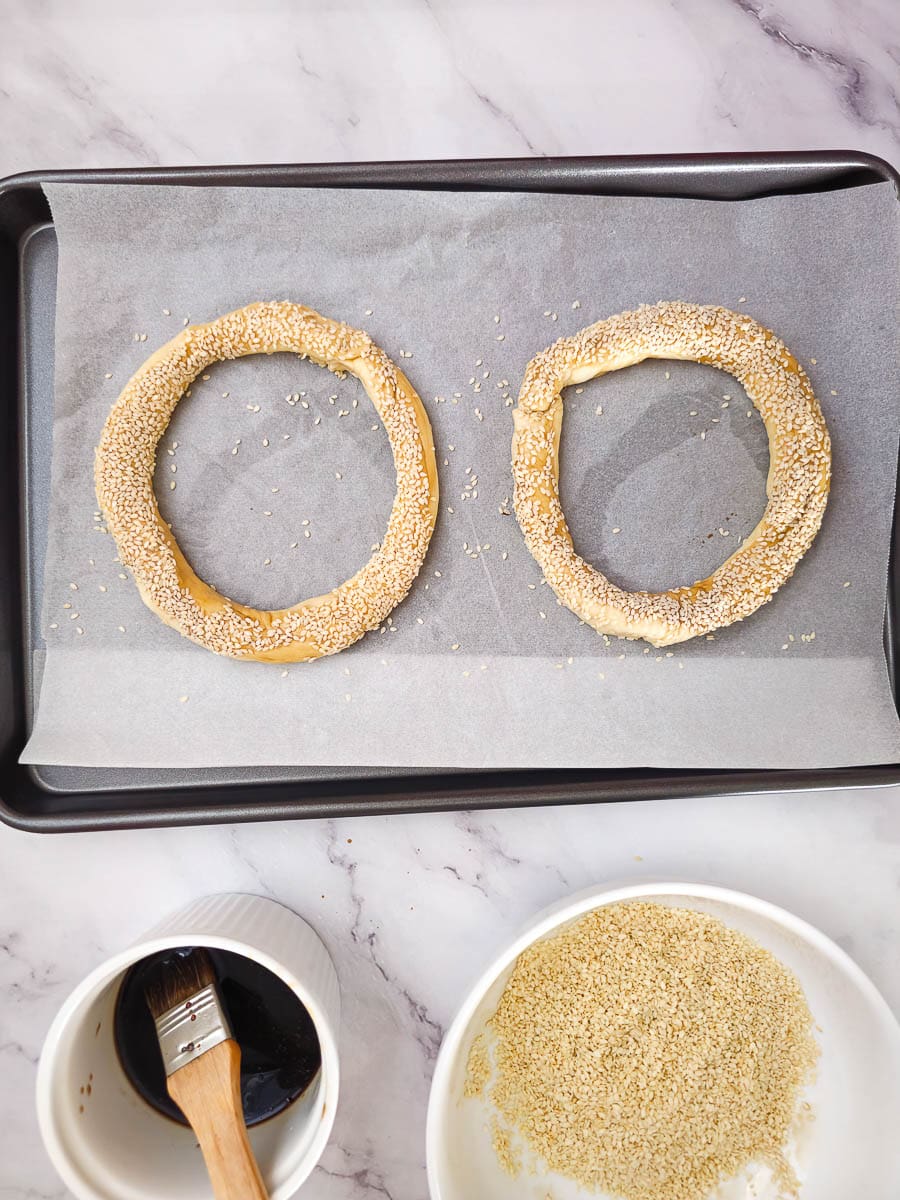
12. Place the sesame-coated rings on a baking tray lined with baking / parchment paper and set aside in a warm place for another 20-30 minutes.
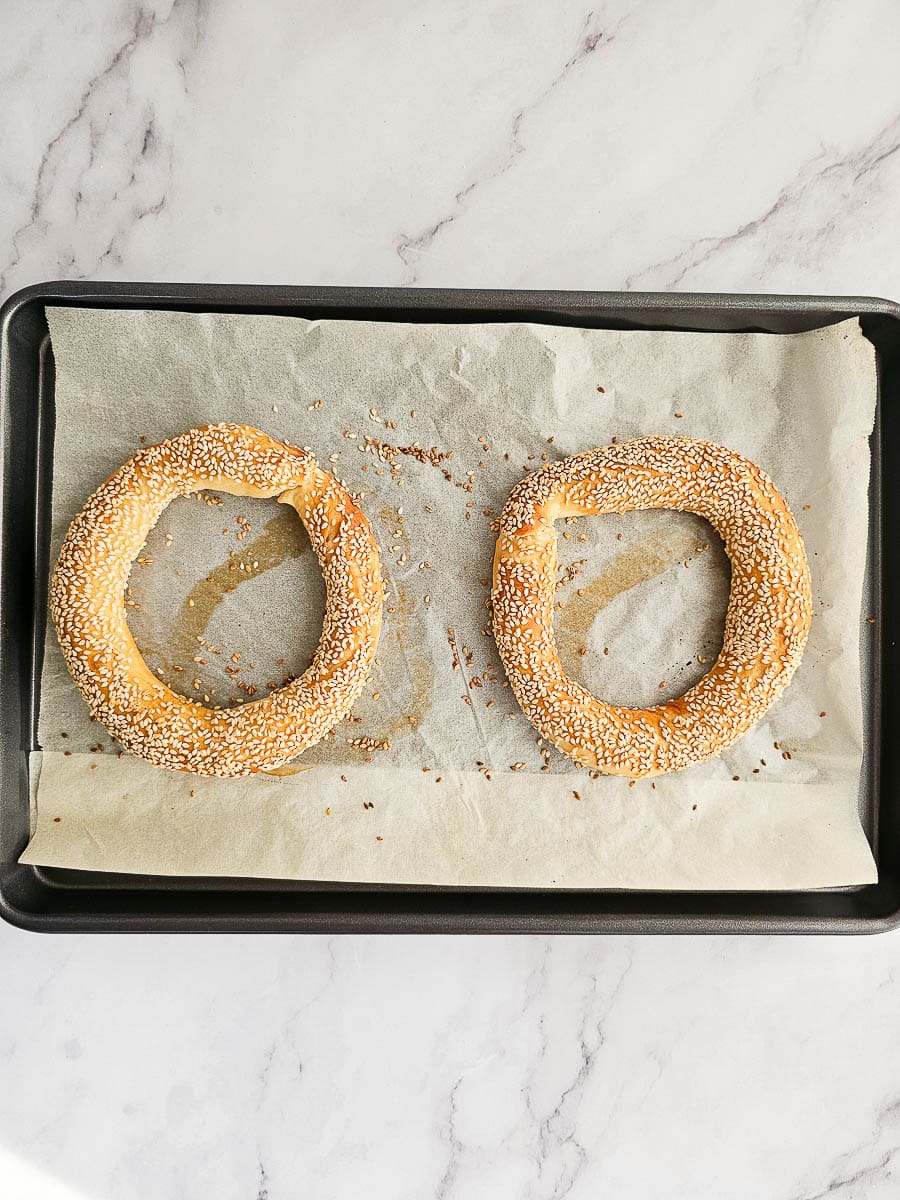
13. Bake the Koulouri for 15-20 minutes, or until golden brown and crisp.
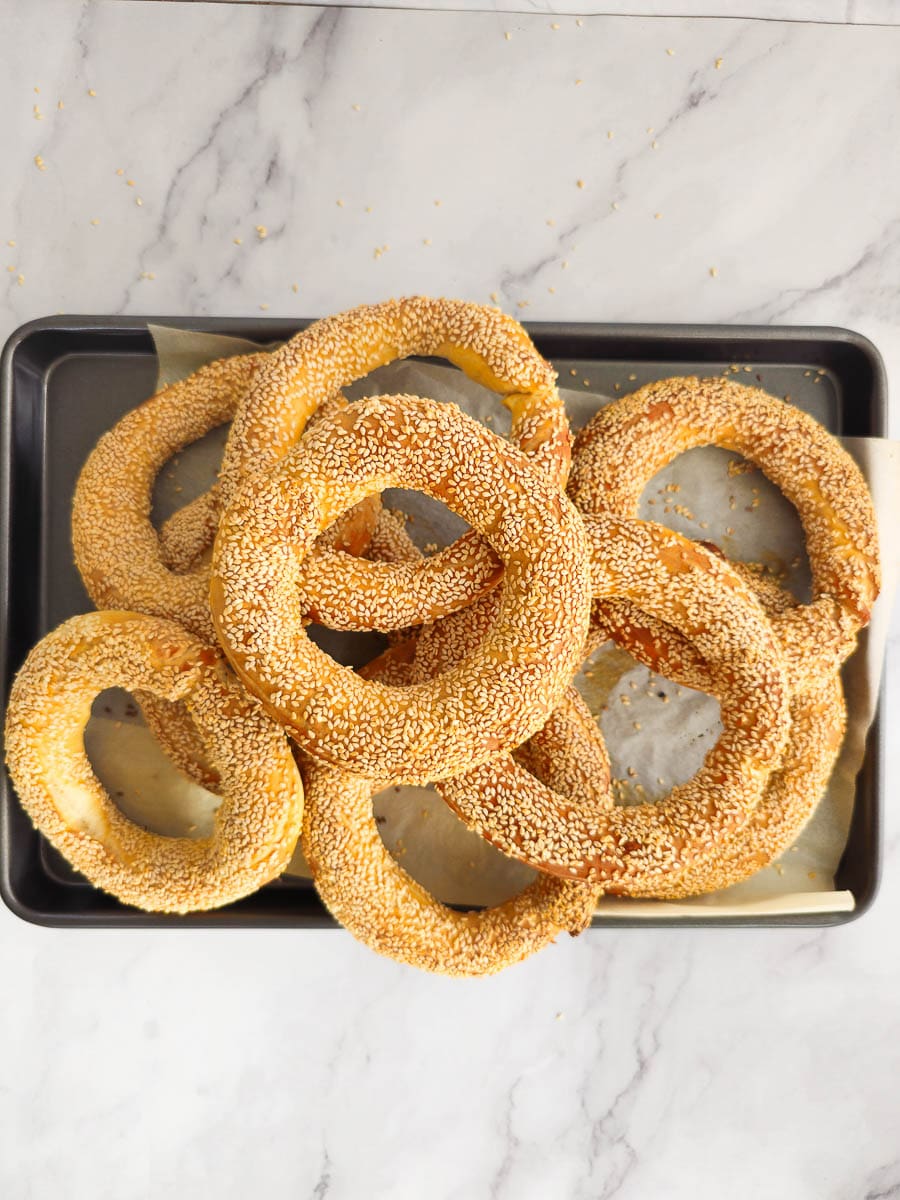
14. Allow the Koulouri to cool slightly before serving.
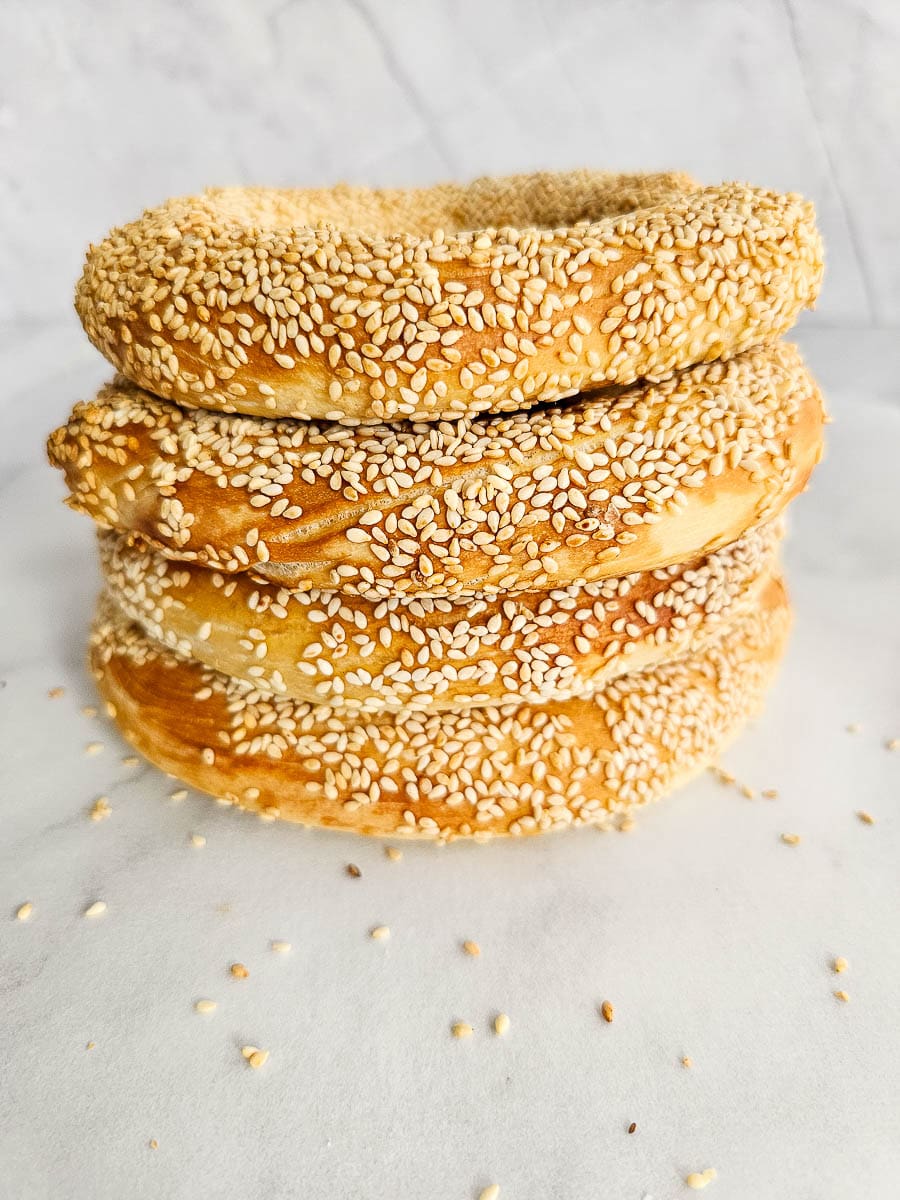
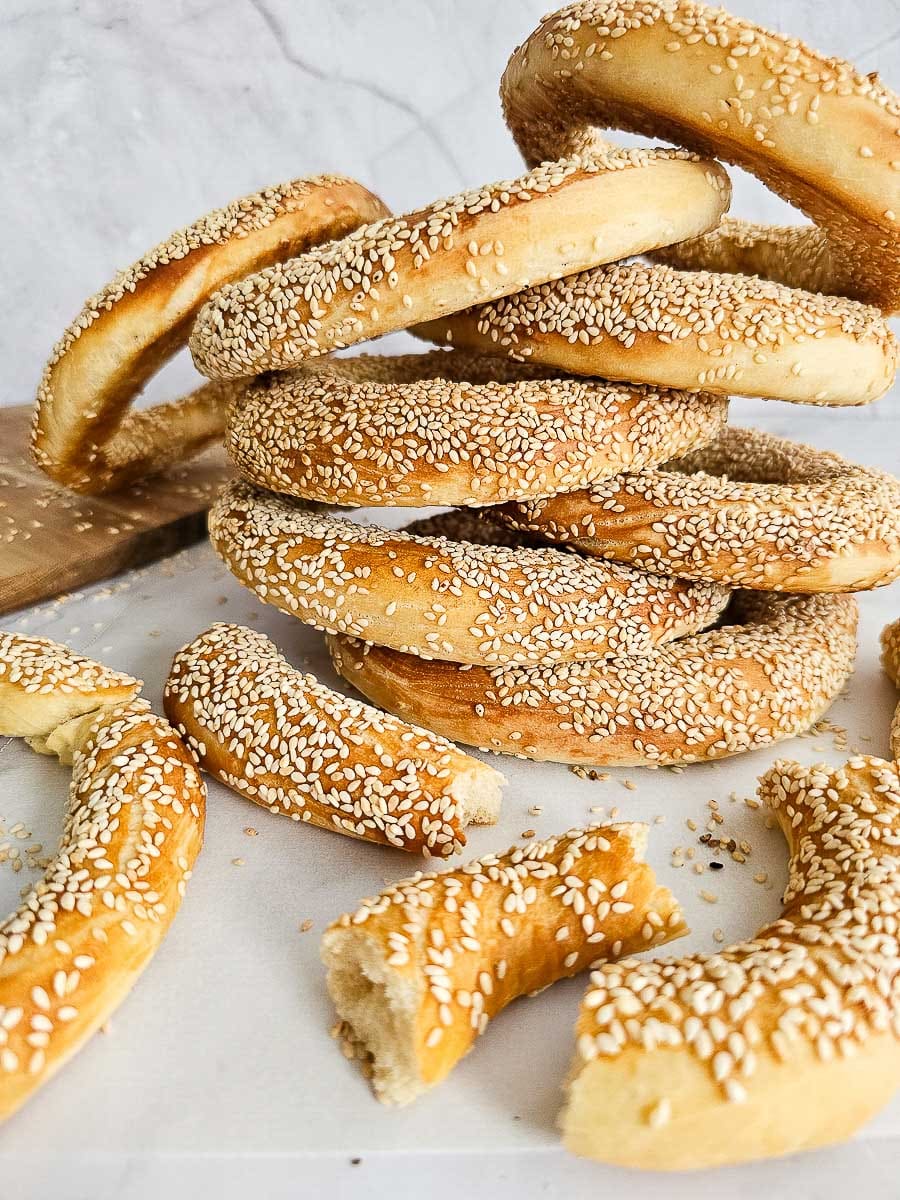
Tips for making Greek Sesame Bread Rings (Koulouri Thessalonikis)
Check the expiration date for the yeast
Before you start baking, make it a habit to check the expiration date on your yeast packaging. Using expired yeast can be disappointing as it may not activate properly to help your dough rise. This can result in dough that fails to rise properly, leaving you with a dense and flat loaf, which is certainly not what you were hoping for after patiently waiting for your dough to proof.
Ensure your water is lukewarm, not hot
To ensure your yeast activates properly and your dough rises well, it’s crucial to use lukewarm water, not water that’s too hot. The water should feel comfortably warm to the touch. If you’re unsure, it’s better for your water to be slightly cooler. It may take longer to activate the yeast, but it prevents the risk of killing it. For accurate temperature, you can achieve the ideal 38°C (100°F) by mixing 200ml (6.8 fl oz) of boiling water with 600ml (20.3 fl oz) of cold water. This mixture will help you achieve the perfect temperature for yeast activation. Maintaining the correct water temperature is essential for activating the yeast effectively, which contributes to better dough rising and texture.
Make sure your yeast is active
Active yeast will begin to bubble and foam within about 5-10 minutes when mixed with warm water and sugar. If you don’t see any bubbling or foaming after 10 minutes, it could be that the mixture wasn’t warm enough. Wait a bit longer if needed, up to 15 minutes, to see if the yeast activates. If there’s still no activity, discard the yeast mixture and start over to ensure your dough rises properly.
Let the dough rise in a warm, draught-free place
For the best rise, place your dough in a warm, draught-free environment. If your kitchen is cold, you can turn your oven to the lowest setting and leave the oven door open. Let the bowl rest on the oven door. This creates enough gentle heat for your dough to rise, making the bread light and airy. For more suggestions on warm places for your dough to rise, check out the tips section titled ‘Where is a warm place that my dough can rise?’ in my Greek Easter Sweet Bread (Tsoureki) recipe.
Sweetening your Koulouri
Before coating the Koulouri with sesame seeds, dip each ring into a mixture of water and grape syrup (Petimezi in Greek, Petmez in Turkish). If you can’t find grape syrup, you can substitute it with sugar. This step not only adds sweetness but also helps the sesame seeds to stick to your dough. For additional sweetness, you could even add a tablespoon of sugar to the dough mixture when preparing it.
Don’t skip the sesame seeds
Sesame seeds give the Koulouri its unique taste and smell. They also contribute to the visual appeal, giving the bread rings a distinctive golden appearance. Coating the dough rings thoroughly with sesame seeds ensures an even texture and flavour throughout. Greek Sesame Bread Rings are typically coated on both sides with sesame seeds. Alternatively, you can coat just one side if you prefer.
Storage
Store in an airtight container or sealed bag at room temperature for up to 2-3 days. For longer storage, place in a sealed plastic bag and refrigerate for up to one week, or freeze for 2-3 months.
To reheat
Place thawed Greek Sesame Bread Rings in a preheated oven for 5 minutes or until heated through.

